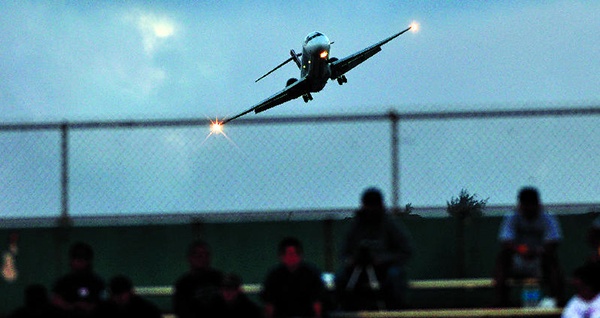LIHUE — An upcoming reconfiguration of one of two runways at the Lihue Airport will cost $4.5 million. Lihue Runway 3-21, which runs parallel to the terminal building, lacks a 1,000-foot runway safety area, or overrun zone, as required by
LIHUE — An upcoming reconfiguration of one of two runways at the Lihue Airport will cost $4.5 million.
Lihue Runway 3-21, which runs parallel to the terminal building, lacks a 1,000-foot runway safety area, or overrun zone, as required by Federal Aviation Administration regulations.
Instead, it ends just a few hundred feet from the Pacific Ocean, leaving no room on that end to create the necessary buffer.
To ensure proper clearance, the Department of Transportation will shift the runway southwest by 855 feet, toward the Kauai Lagoons Golf Club. The construction funds will pay for improvements to address runway safety area compliance for Runway 3-21 and Taxiway B, ultimately increasing airfield safety.
On Friday, Gov. Neil Abercrombie announced the release of $22.6 million for capital improvement projects at seven Hawaii airports. His office said the funding will “inject momentum into Hawaii’s construction industry,” which is forecasted to lead the state’s economic growth in the coming years, according to a release.
“Since 2011, this administration has released nearly $1 billion for projects to improve Hawaii’s airports statewide,” Abercrombie said in a release. “We continue to transform our airports into world-class facilities, while creating jobs to further employ a labor force that is at an all-time high in our state.”
The estimated completion date for the planning phase of the Lihue project is November 2016.
In 2005, Congress mandated that all commercial airports enhance passenger safety by improving their Runway Safety Areas by 2015 and that the FAA report annually on its progress, according to a 2009 DOT report. The FAA defines a Runway Safety Area as “a defined surface surrounding the runway prepared or suitable for reducing the risk of damage to airplanes in the event of an undershoot, overshoot or excursion from the runway.”
The Associated Press reported in 2006 that more than half of U.S. commercial airports — including some of the busiest in the country, like Los Angeles International Airport and O’Hare International Airport in Chicago — did not have the 1,000-foot safety area at the end of a runway.
In March, the Lihue Airport received $410,000 to plan for an environmental assessment related to the reconfiguration.



